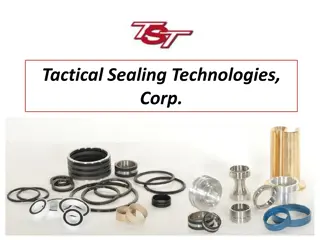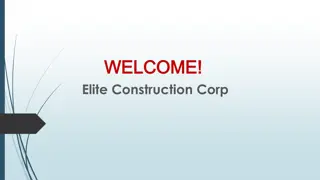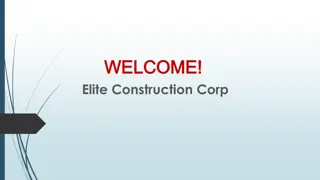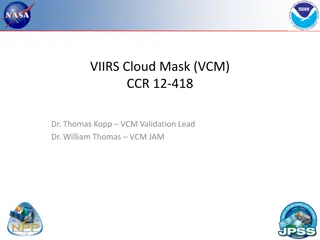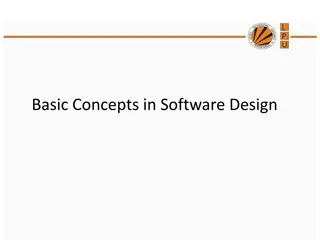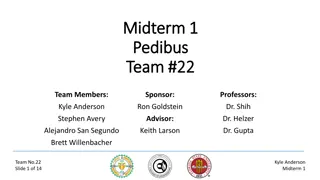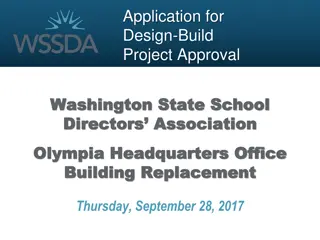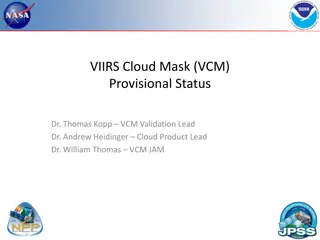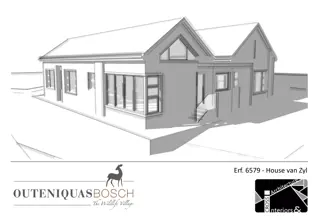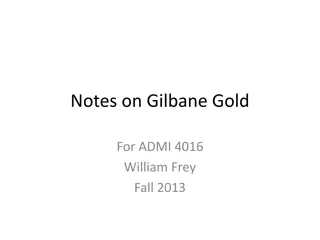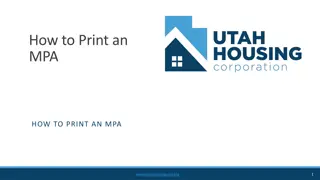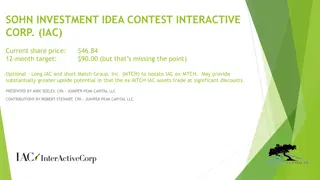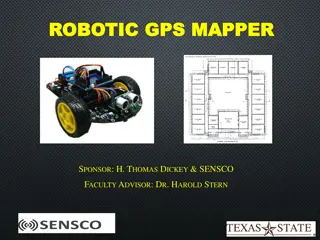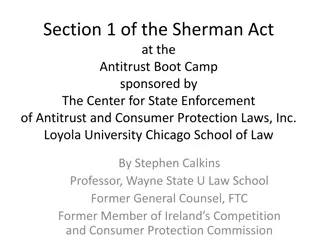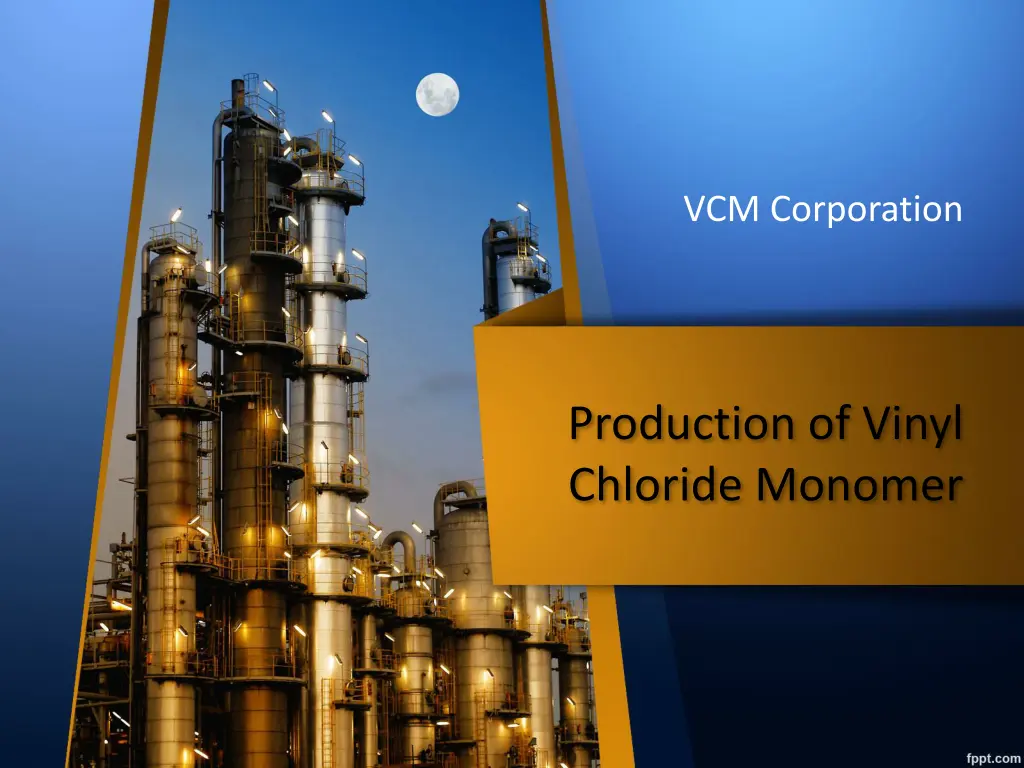
Vinyl Chloride Monomer Production and Feasibility Study
"Learn about the production of Vinyl Chloride Monomer (VCM) used in PVC manufacturing, different feedstocks like ethane, acetylene, and ethylene, feasibility study insights, market survey data showing Asia as a major consumer, and the importance of VCM in the industry."
Download Presentation

Please find below an Image/Link to download the presentation.
The content on the website is provided AS IS for your information and personal use only. It may not be sold, licensed, or shared on other websites without obtaining consent from the author. If you encounter any issues during the download, it is possible that the publisher has removed the file from their server.
You are allowed to download the files provided on this website for personal or commercial use, subject to the condition that they are used lawfully. All files are the property of their respective owners.
The content on the website is provided AS IS for your information and personal use only. It may not be sold, licensed, or shared on other websites without obtaining consent from the author.
E N D
Presentation Transcript
VCM Corporation Production of Vinyl Chloride Monomer
Introduction Vinyl Chloride is mainly use for the production of Polyvinyl Chloride (PVC). There are three feedstock that can be use in the production of VCM which are ethane, acetylene and ethylene.
Ethane The use of ethane as the feed stock is because of the cheaper price of ethane compared to the ethylene. The price of ethane is one-third of ethylene. The production of VCM process from ethane is still under research. There are major problem associated with the use of ethane is its molecular symmetry (Dry et al., 2003) Several attempts failed during the scale up. It is cause by the poor conversions, catalyst instability and corrosion by high temperature.
Acetylene Production of VCM in China are using acetylene. The production capacity of PVC started to increase in China due to lower cost production of VCM. The acetylene price in China is cheaper than other country. (calcium carbide acetylene) The production of VCM from acetylene only advantage economically in China. The catalyst used in the process is dangerous (HgCl2).
Ethylene Consist of 2 pathways of VCM production Direct chlorination Oxychlorination Low investment cost and common process for VCM production. Sources of raw materials is viable and easy to get.
Vinyl Chloride Monomer VCM used in the PVC manufacturing industry and copolymer. VCM can be stored as liquefied gas. Also called 1-chloroethylene or chloroethene. The CAS number is 75-01-4. VCM is in colourless gas, sweet & faint odour, boiling point is -13 Chemical formula for VCM is C2H3CL; vapour density 2.15, volatility 100% VCM is a chemical that can cause health problem to human and aquatic organisms.
VCM Corporation Feasibility Study
Feasibility Study Technical Market Survey Economics Feasibility Study
Market Survey Asia is known as the largest consumer for VCM (50%). The demand for the VCM is increasing as the price for the PVC in the Chinese market is surging. The buyers from China willing to imports VCM to China. This fluctuate the price of VCM to $707.5/tonne (RM 2957.35). The supply for the VCM in NE & SE Asia remain tight throughout quarter 3 for 2016.
Direct Chlorination Technical HCL EDC purification Purification Production Process Waste Recovery Pyrolysis VCM Purification
Technical Direct Chlorination Produce EDC reaction between 2 gaseous (ethylene & chlorine) under exothermal condition at moderate temperature. The presence of FeCl3 as catalyst act as inhibitors to helps substitution reaction. Pyrolysis (Thermal Cracking) Breaking the longer chain of hydrocarbon. The process use furnace to heat up the EDC; pyrolysis reaction rate become significant. undergoes endothermic reaction for it to decompose into VCM and HCl.
Technical VCM Purification VCM is purified in the distillation column. The by-product from the distillation column is EDC, HCL and other. HCL Purification Anhydrous HCL and aqueous HCL is purified in the purification column.
Technical Economics & Proven Technology The VCM technology has been improvised; now the VCM plant is one of the cleanest & safest chemical process industries. In cracking-part, low depth cracking are needed to reduce the by-product formation. The process of VCM production are improvising to ensure the efficiency increase and the cost become lower.
Economics Profitability Measures The Investor's Rate of Return for this Project: The Net Present Value (NPV) at 24.75% for this Project: RM 7,368,918.99 ROI Analysis (Forth Year Production) Total Capital Investment: 24.75% Annual Sales: RM 145,775,500.00 Annual Costs: RM (126,761,107.03) Income Tax: RM (4,753,598.24) Net Earnings: RM 14,260,794.72 RM 44,305,784.05 ROI: 32.2%
Economics The production price for the Vinyl Chloride Monomer is RM 2535.22 per one tonne from the production cost divide with production capacity. The selling price for the Vinyl Chloride Monomer is RM 2915.51 per one tonne which are 15% increment from the production price. The total price gain from the total capacity of 50,000 TPA can be determined. Selling price for 50,000 TPA of Vinyl Chloride Monomer
Taxable Income or Profit for VCM can be determined by, Taxable Income = Total Selling Price Total Production Cost = RM 145,775,500.00 RM 126,761,107.03 = RM 19,014,392.97 Based on the Taxable Income, the income tax are determined. The current income taxes in Malaysia for income above RM400000 is 25%. Net earnings (Net Profit) = Taxable income income tax = RM 19,014,392.97 - RM 4,753,598.24 = RM 14,260,794.72 Payback Period Payback period = Fixed Capital Investment / Net Profit = RM 44,305,784.05 / RM 14,260,794.72/year = 3 years and 2 months
VCM Corporation Process Selection
Direct Chlorination Homogenous catalytic reaction between ethylene and chlorine Dichloroethane will form due to the reaction Ferric chloride is the catalyst Process in Fluidized Bed Reactors Operate at low temperature chlorination (50- 90 C) high selectivity Exothermic reaction
Simulation of Direct Chlorination EDC enter acid wash tank to discard undesired liquid (HCl and Cl2) Aqueous effluent from reactor enter vertical packed bed fume scrubber (NaOH) NaOH act as scrubbing liquid that neutralize the HCL and emits non hamrnful gases Then sent it to settling tank to separate NaOH & crude EDC
EDC purification Purified in distillation column Removes moisture in the stream that can cause corrosion Top product high purity EDC Bottom product heavy ends ( trichloroethane, hydrogen chloride, ethylene & chlorine) Bottom product will be send to waste recovery for further treatment
Thermal Cracking & Quenching EDC will enter furnace (convert EDC to VCM and other by product). Temperature around 480 C to 550 C with pressure 3 to 30 bar (endothermic reaction) The vapor is then send to quenching immediately to avoid ay coke or tar formation
Purification of VCM Refine using distillation column to produce high selectivity VCM. Separate EDC and byproduct in the distillation column Remove undesired EDC and other by-product (polychloride) EDC will be recycled back to pyrolysis and polychloride will undergo treatment at waste treatment process
Waste Treatment The byproduct is sent to incinerator Incinerator operate at 1127 C for the combustion of halogen element and waste that contain chlorine Oxygen is supply for the combustion process. Produce CO2,H2O,hydrochloric acid (HCl), Cl2 gas, nitrous oxides(NO2)
Hydrochloric Acid purification Anhydrous HCL and aqueous HCL combine and purified in the purification column The end product is hydrochloric acid HCL will be sold as by-product
The process control use at the plant is feed forward and feed-back control system Control the temperature, level, flow and pressure of the processes Indicator and controller are install at every major equipment
VCM Corporation Mass Balance


